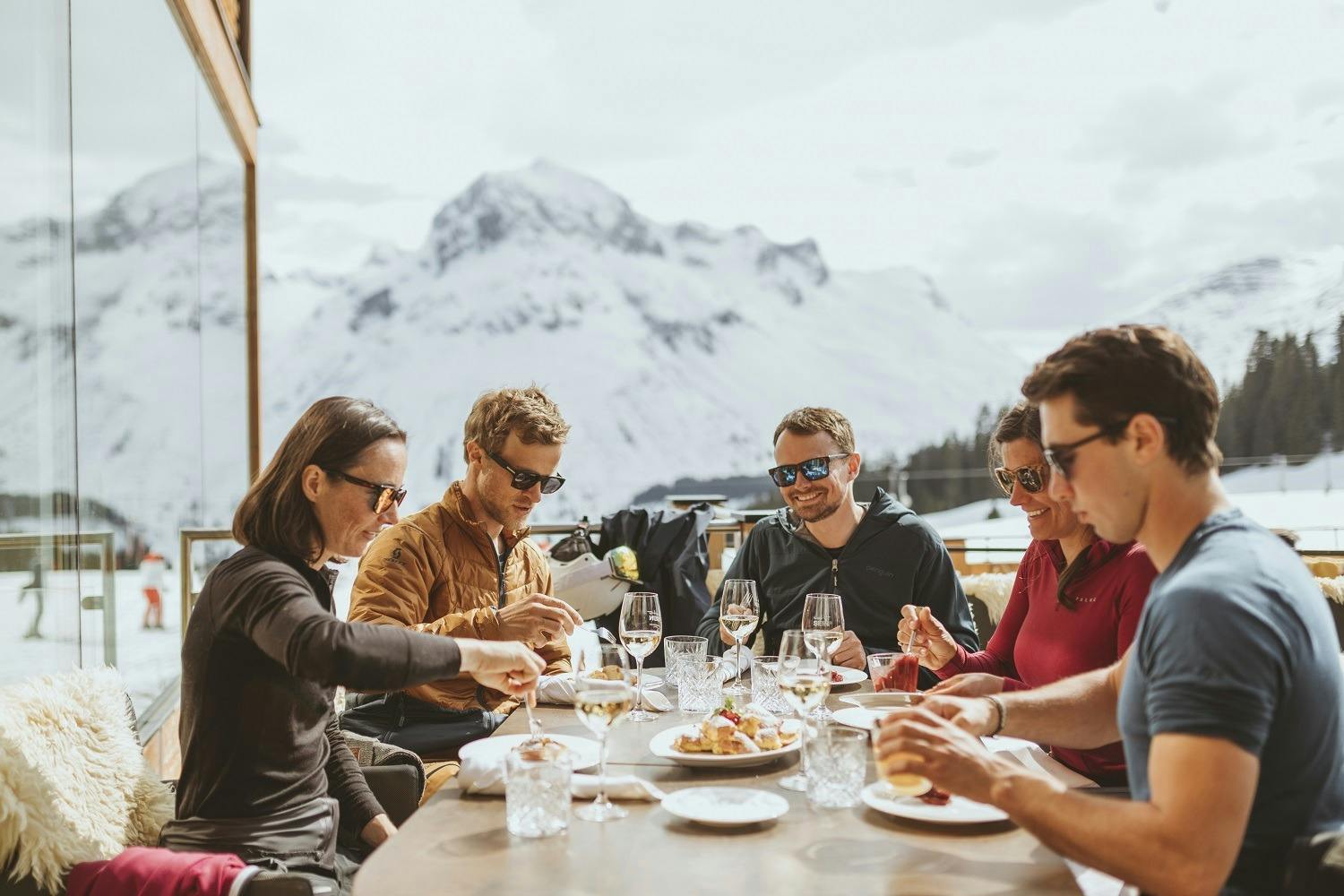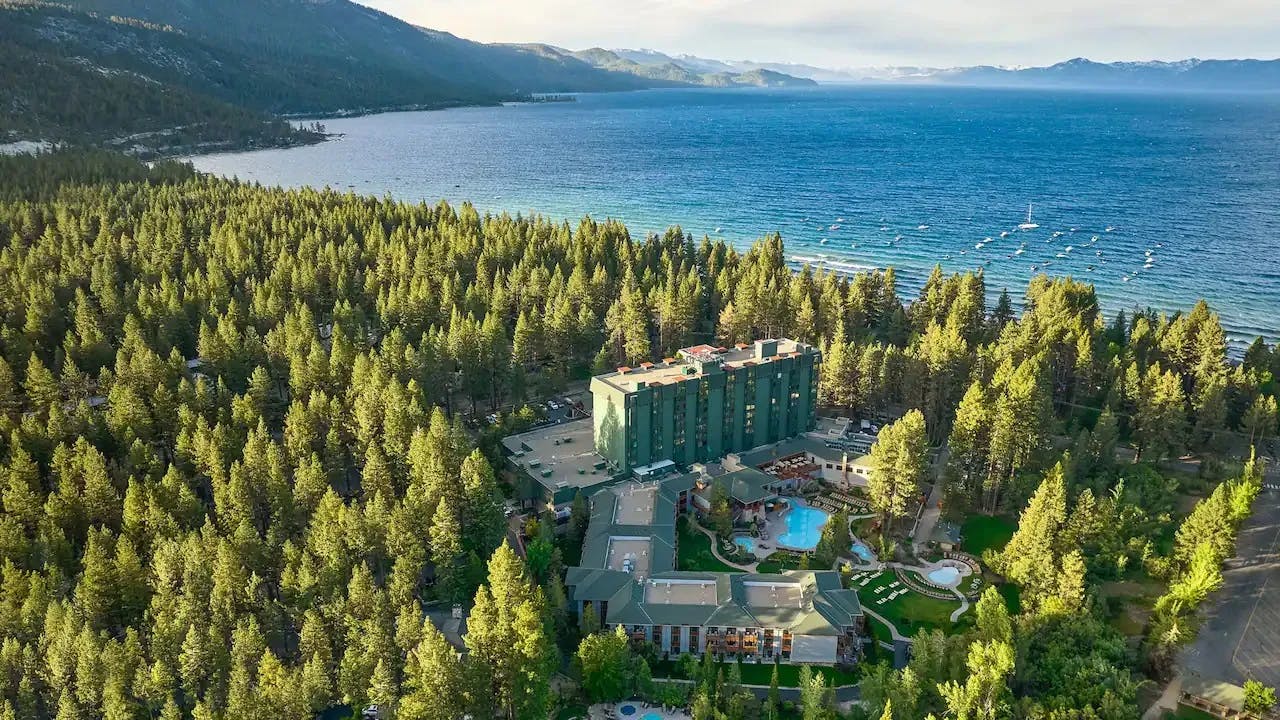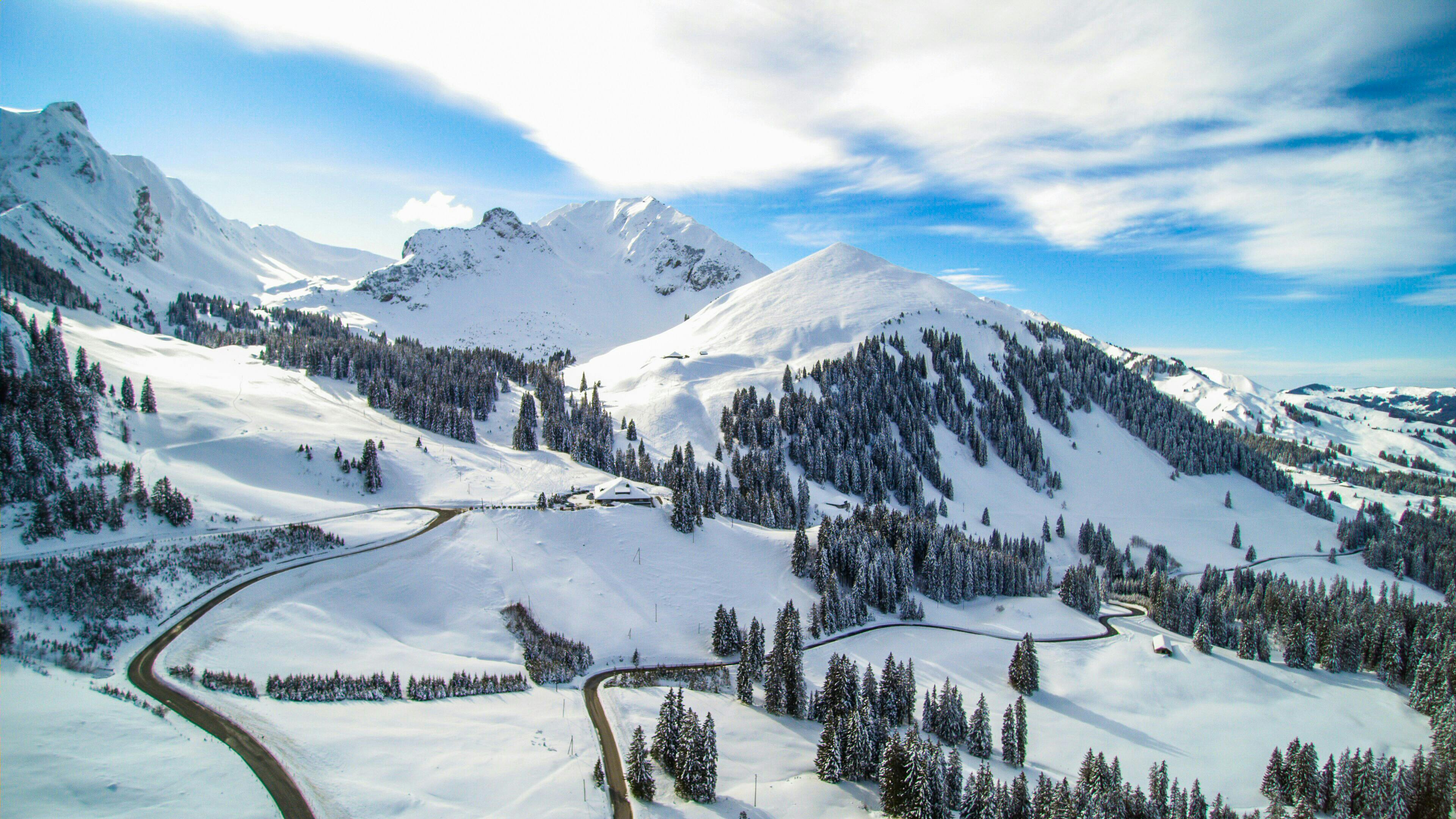- Ski.com Home
- Blog
- Discover the Tyrolean Culture with a Skier’s Pilgrimage to Austria
Discover the Tyrolean Culture with a Skier’s Pilgrimage to Austria

Austria's rich Alpine heritage and vibrant ski culture provide a distinctive experience that often goes unnoticed compared to other European Alpine destinations. Embarking on a ski pilgrimage to Austria allows enthusiasts to immerse themselves in the soul of skiing, with options suitable for various skill levels and budgets. We can also help mitigate any myths about Austrian ski vacations being inaccessible due to cost or skill level, so read on to learn why a trip to Austria this ski season is a good fit for everyone and may not totally be out of budget reach.
Skiing is not only widely embraced in Austria, but many of the common practices surrounding ski culture as we know it today came from Austrians. Austria has significantly shaped modern skiing. Renowned ski manufacturers such as Atomic, Fischer, and Blizzard are headquartered here, contributing to the country's reputation for quality ski equipment. Additionally, Doppelmayr, the world's largest manufacturer of ski lifts, originated in Austria, underscoring the nation's pivotal role in ski infrastructure development. A few other Austrian claims to fame in the skiing world include the invention of electric ski passes, the modern skiing technique from Hannes Schneider and the record for the country with the most Alpine Skiing World Cup victories of all time.
While a little over 70% of Austrians speak English, “Gemütlichkeit” is the word you ought to most familiarize yourself with before visiting. The term itself does not have a direct translation but is a cultural trait that enhances the skiing experience, as tourists quickly feel comfortable and embraced by the local ambiance. This term and overall attitude embody the Austrian culture and provide another reason why one may opt to travel to Austria over another ski destination in Europe. The influence of Gemütlichkeit and the attention to comfort in between runs out in the rubs off on tourists making for a warm, positive environment with a unique sense of familiarity. Those who arrive in Austria to visit for the first time hardly feel out of place or away from home for very long.
As far as places to visit along the way, we recommend Arlberg, Innsbruck and Kitzbühel within the Tyrol region. From a visit to the oldest alpine ski run in Kitzbühel to exploring the Olympic history of Innsbruck or skiing the run of fame in Arlberg, no matter where you stop in Tyrol, you’ll experience superb skiing and culture. Plus, those visiting Europe for the first time, can begin their journey in Amsterdam and take the new overnight train to the mountains of Austria this season.
 Gorgeous view of the mountains in Innsbruck. Photo credit: Simon Rainer.
Gorgeous view of the mountains in Innsbruck. Photo credit: Simon Rainer.Innsbruck:
As Austria's fifth-largest city, Innsbruck is surrounded by nine ski resorts and features a historic old town. Enjoy traditional Tyrolean cuisine after a day of sightseeing and museum visits, or enjoy a ride up in the funicular to the Cloud 9 Igloo for a cocktail and unbeatable panoramic mountain views.
Expert skiers will appreciate the challenge of Nordkette, which has one of the steepest runs in Austria and is closest to the city. Our Mountain Travel Experts described the skiing at Nordkette as an aggressive intermediate mountain. There are multiple resorts and passes to choose from in Innsbruck, but the SKI plus CITY pass provides access to 13 resorts, including the expansive Stubai Glacier and Kühtai Ski Resort, known for its tree runs and wide slopes. You can also visit the Kuhtai Ski Resort with the pass, only a 45-minute shuttle ride from the city, and best known for its tree runs, wide slopes and skiing amongst local cows on the mountain.
 A skier enjoying some turns on in the Kitzbühel Alps. Photo credit: Michael Mueller, KME Studios.
A skier enjoying some turns on in the Kitzbühel Alps. Photo credit: Michael Mueller, KME Studios.Kitzbühel:
Known as a "piste-paradise," Kitzbühel receives abundant snowfall, creating ideal conditions for varied terrain. You can expect buckets of snow falling every year and the widespread terrain amongst the surrounding resorts. Because of all the Kitzbühel Alps have to offer, it’s also popular to go on “ski safaris” to tour multiple resorts during your visit. Find one that meets your needs, from family-friendly terrain to glacier adventures, there are routes for everyone to enjoy.
Whichever mountain you end up on, be sure to explore the slope-side dining options. There is a variety of cuisine, different than typical American slope-side eats, at reputable restaurants for a gourmet taste of Austria. Some even are set up chalet style, so you can rent a room as well as dine and enjoy après there, then the next morning you wake up right on the mountain.
There are plenty of activities for the non-skier to do in Kitzbühel as well. At the city center, there’s a pedestrian zone filled with shops and restaurants, providing a very cosmopolitan feel while near the mountains. Kitzbühel is probably best known for the Hahnenkamm downhill route, a world-famous course where some of the best international athletes compete every January since the 1950s when it was first built. Visit the Hahnenkamm to take in the alpine skiing history, spectate the races if you’re there in January or even try the course for yourself if you’re feeling up to the challenge.
Arlberg:
Lech-Zurs:
If you’re searching for a more luxurious type of stay, Lech is the perfect option. It’s separated into two areas- Lech and Oberlech. Lech offers a luxurious experience with upscale hotels, shopping and après-ski options, and the latter you’ll get to via a gondola that goes over the town and brings you to a system of tunnels. While whimsical, the Oberlech tunnel infrastructure can also be confusing to new visitors; however, there is the main walkway connecting all the main hotels.
 An authentic Austrian meal enjoyed in the mountains in Arlberg. Photo Credit: Christoph Schoech.
An authentic Austrian meal enjoyed in the mountains in Arlberg. Photo Credit: Christoph Schoech.Skiing the Ring Circuit allows guests to go all around the Arlberg resorts and over from Zurs. Our MTEs recommend getting a guide to take full advantage of the route and make sure you’re back to the resort in time for après. When skiing you’ll be impressed with the fast speed of the lifts and technology, including enclosed bubble chairs with heated seats, some of which can seat up to 8 skiers at a time.
Zurs sits in between Lech and St. Anton and provides excellent ski-in ski-out access and world-class spa services. It’s a small village but some of the hotels have their own nightlife if guests are looking for that kind of experience. You’ll be staying in a picturesque European village with an abundance of world-class spa services, for the ultimate relaxation after a long day of skiing and soaking in all the mountain views.
 Village of St. Anton am Arlberg in the evening. Photo Credit: Wolfgang Burger.
Village of St. Anton am Arlberg in the evening. Photo Credit: Wolfgang Burger.St. Anton:
A ski trip to St. Anton is happening and attracts a younger crowd with all the live music and DJs on a nightly basis at most bars and restaurants. St. Anton attracts a younger crowd with vibrant nightlife and is known as the "party town" of the region by our Mountain Travel Experts, with a gondola that connects with the resort in Lech, facilitating exploration.
The grooming technology in Europe is also superb and depending on where you want to ski, there are plenty of groomers and backcountry to go around. MTEs said for guests who assume skiing Europe is too challenging, to note the grooming and to keep in mind that the Lech and Zurs resorts are more beginner-intermediate friendly.
The inter-resort lift is the Flexenbahn, a high-speed, 10-person gondola that will bring guests between the resorts to get a taste of all the skiing Arlberg has to offer. When staying in St. Anton, you’ll be able to unwind and kick off the après at the local recreation center with a pool and sauna. You can close out the night with one of the various DJ sets at Happy Valley or the Piccadilly Bar and drinks before heading back to your resort and doing it all again the next day.
Don’t just take our word for it—connect with a Ski.com agent today or explore our Austria vacation packages and get ready to say ‘Guten Tag’ to a ski adventure unlike any other.
TAGGED: french alps, austria vacation, Powder, aspen ski area, travel
Jessica Peterson
Author
Latest blogs
View AllHow Our Free White (Ski) Glove Service Works:
Reach out to a Ski.com Mountain Travel Expert by phone, chat, or our online form. Share details about your group size, interests, and budget and your Expert will begin to craft your dream ski vacation.
Get a curated proposal with personalized suggestions from your Expert via email. Book directly online or request additions or revisions from your Expert until it’s perfect.
If you have questions, want to add or modify your reservations or need anything assistance, your Expert is always by your side to help before, during and after your trip.
Sign up for our newsletter
Sign up for exclusive offers, news, updates and more.




